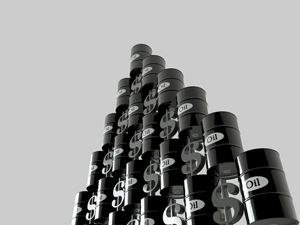Since falling to a low of $42.48 in June, oil prices have surged 23.39% to today's price of $52.19. And the gains aren't stopping there according to our oil price forecast...
WTI crude oil prices have been volatile over the last year, but we're finally seeing signs that oil prices are steadily rising to our target price.

In fact, Money Morning Global Energy Strategist Dr. Kent Moors' September oil price target was right on the money. In July, when oil prices were around $45 a barrel, Moors predicted they'd rise to $52 a barrel by the end of September. Crude prices hit $52.22 on Sept. 25.
Now, Moors' next oil price prediction is out for the end of the year, and it's good news for oil investors. Here's why oil prices are rising, including Moors' exact oil price forecast...
Oil Prices Are Heading Even Higher in 2017
There are two key reasons oil prices are heading higher this year.
First, the global demand for oil is rising.
The International Energy Agency's latest oil demand report shows global demand for oil rose by 1.2 million barrels a day between the first quarter of 2016 and the first quarter of 2017. Plus, it's forecasting demand to keep rising.
"Globally, the IEA, EIA, and OPEC have now all revised their expectations for oil demand up (again)," according to Moors.
"We'll end 2017 at the highest daily demand level in history."
The World's First "Universal Fuel": Physicists have known about an unlimited source of free fuel for over 100 years. And the cost of the fuel is zero. It's free. Click here to read more...
Rising demand is a bullish indicator for oil prices, because more demand means oil can command a higher price. And that's especially true if the oil supply stays flat...
Second, OPEC's oil production cap is keeping a lid on excess supply.
When OPEC and 11 other countries agreed to cut their oil production on Nov. 30, 2016, oil prices immediately rallied. The price of oil jumped 11% the week the deal was announced, rising from $45.66 on Monday, Nov. 28, to $51.70 on Friday, Dec. 2.
But the rising price of oil spurred American shale oil producers to pump more oil, and oil traders bid the price of oil back down. Oil futures hit a low of $42.48 in June.
Now, after renewing the deal in May, OPEC is showing it's committed to curbing excess oil supply over the long term.
The Farms of the Future Are an Energy Investor's Dream
In fact, if oil prices don't keep climbing, Saudi Arabia has said they will push for an even deeper cut through OPEC next year.
But that might not be necessary. OPEC has sported a compliance rate with the cuts as high as 95%, and production across OPEC has fallen roughly 1 million barrels year over year.
It's not just OPEC managing the supply of oil, either. American producers are no longer flooding the market with oil whenever the prices rise. American producers are maintaining steady production growth instead. The supply of crude oil in the United States fell by over 2% during the summer. The month of July saw the stock of crude oil in the United States drop below 2 billion barrels for the first time since early 2016.
And while oil prices are already rising this year, we're seeing signs that they're heading even higher...
Our Oil Price Forecast for the End of 2017
[mmpazkzone name="in-story" network="9794" site="307044" id="137008" type="4"]
Dr. Kent Moors says WTI oil prices could gain another 10% this year, reaching a potential high of $57 a barrel.
Moors expects crude to reach a range between $55 and $57 a barrel by the end of 2017.
While Moors says the realities of OPEC's oil production cut and rising demand will boost oil prices, he says there's another key indicator showing WTI prices are heading higher.
That's the spread between Brent crude prices and WTI crude prices...
You see, Brent is the benchmark for international oil prices, while WTI is the benchmark for U.S. oil prices. And Brent typically trades at a higher price than WTI, because it's the international measure for oil prices. The higher demand for Brent contracts boosts its price over WTI, but it also means when global oil sentiment changes, it's seen first in Brent prices.
While Brent crude typically trades higher than WTI, Moors says that the growing spread between Brent crude and WTI is a sign that WTI is heading higher soon. In other words, since Brent prices move first, WTI is soon to follow.
Back in August, the spread between Brent and WTI grew to more than 8%, the first time it reached that level in two years. Since then, the spread has grown to more than 10%.
Now Brent crude is currently trading at $58.48 a barrel, while WTI is at $52.55 a barrel - an 11% difference.
Moors says the last time Brent traded a double-digit percentage higher than WTI, the price of WTI spiked.
"All of this seems to indicate that a rise in the spread, occurring early in a new process, may well be a harbinger of a higher overall pricing dynamic moving forward," Moors said.
In fact, Brent crude prices have already hit Moors' 2017 price target. That means his WTI price target of $52 to $54 won't be far behind.
Saudi Arabia's $100 Billion Plan to End Big Oil: Billionaires have been dumping oil stocks at a frantic pace. Warren Buffett sold $3.7 billion worth of oil holdings, Bill Gates unloaded nearly $1 billion, and George Soros closed out multiple positions. A former intelligence operative believes it's connected with the new fuel Saudi Arabia is pouring $100 billion into. Click here to find out more...


